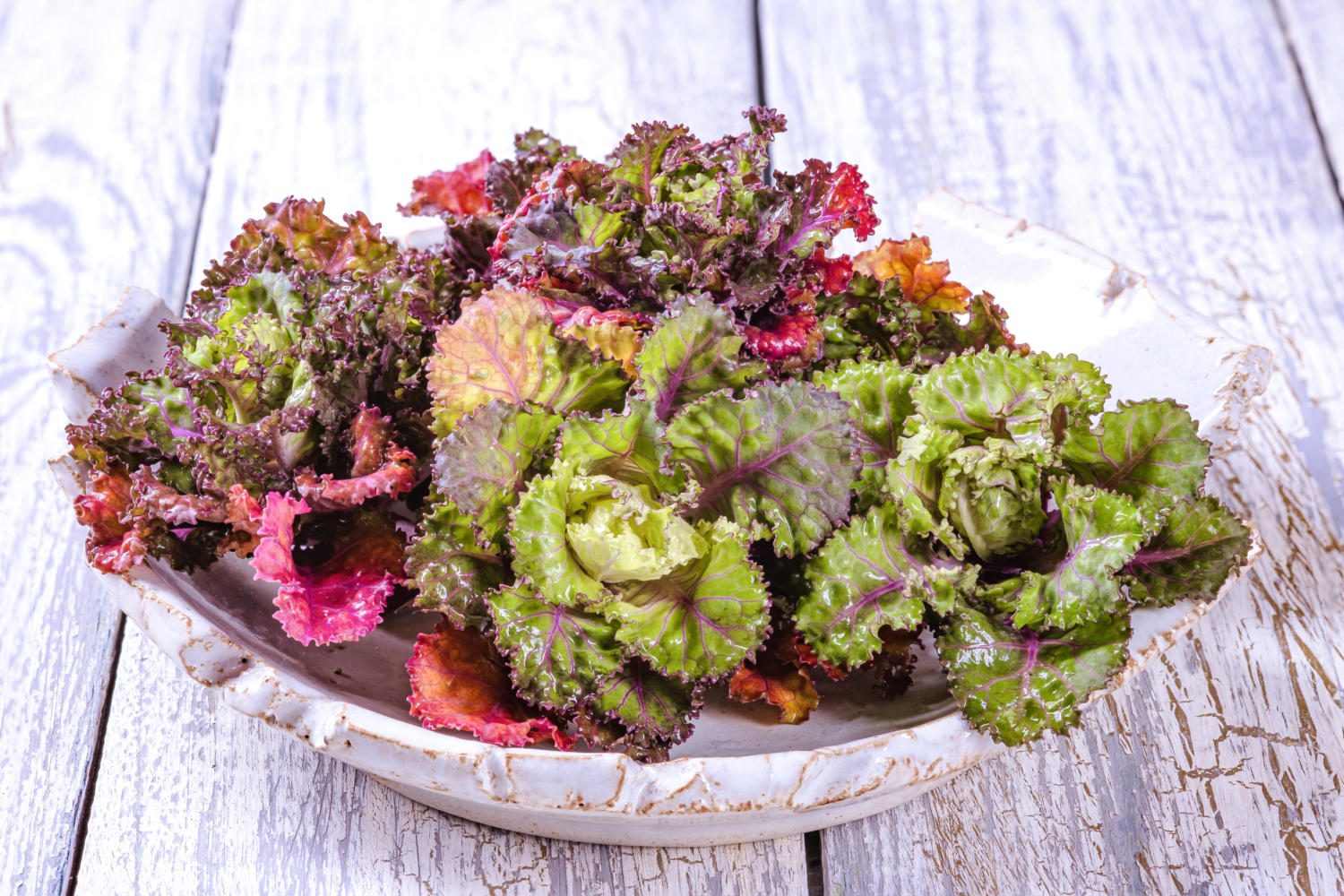
Every so often a particular vegetable gets talked up in gardening and cooking magazines and websites. Black Tuscan kale, or Nero di Toscana in Italian, was all the rage recently. Such was the hype that it’s now found on supermarket shelves and veg plots where the gardener is a bit avant-garde. If you’re not a fad-following foodie, black Tuscan has elongated, non-curly, dark blue-green leaves that are carried on plants that reach up to a metre in height. Like other kale, it’s primarily an autumn and winter crop. I gave black Tuscan a try for a couple of years but wasn’t much impressed. The plants did crop quite well in late autumn and the leaves did seem tenderer than other kales. However, as winter set-in, the plants became bedraggled with leaves and its shoots turned slimy well before spring.
Given this experience I was sceptical when kalettes, a similar vegetable —in that it is also a brassica (cabbage family) plant — burst on the scene. Sometimes also referred to as ‘flower sprouts’ or ‘petit posy’, kalettes first took off about ten years ago after promotion by a major upmarket food retailer and features in trendy culinary columns. Unlike black Tuscan kale, which goes back centuries, it’s a completely new vegetable. Bred by British seed company Tozer using traditional (non-GM) techniques, it’s a cross between kale and Brussel sprouts. In appearance the plant looks closest to kale, usually reaching a metre in height and having curly blueish green leaves with purple stalks. The part eaten, the actual kalettes, are florets or rosettes of loose frilly-edged buttons that are three-to-five centimetres in width and are carried, like Brussel sprouts, on a long stalk. As with both parents, it’s a winter crop, in season from late October to early April.
I first gave kalettes a try three years ago. The plants started in the same way as kale, sown in module trays in May with the seedlings planted out in late June spaced about 50-centimetres apart. As with all brassicas, netting was used to fend off pigeons and butterflies. The plants grew well and began to produce edible-sized florets around Christmas time that continued well into spring. Buoyed by this success, kalettes are now part of my repertoire —with thirty odd plants growing this winter. These were started a touch earlier than in previous years, to try and get a slightly faster harvest. As I write in late January there have been several pickings but, overall cropping hasn’t been much quicker. Perhaps this is down to several cold spells, but my guess is that kalettes are essentially a crop for later in winter and into early spring.
In many ways this tardiness is a plus. Unlike black Tuscan kale that seems to be exhausted by Christmas, kalettes have enough staying power to help fill the ‘hungry gap’— that time in early spring when there’s not a lot of fresh produce to harvest. This alone makes kalettes worth a spot on any plot, but there are plenty of other reasons to give them a go. A big plus is that they’re an undemanding crop, as easy to grow as kale. In the kitchen, there’s none of the fiddly peeling usually needed with sprouts. Better still, like lots of brassicas, kalettes are good for you. Frequently feted as a ‘superfood’, they’re rich in vitamins C and K. What’s more, they should appeal to even the most reluctant brassica eaters as they taste much sweeter than Brussel sprouts and are much less chewy than most kales— including black Tuscan! Ultimately, I’ve had to say arrivederci to the former favourite.









Add a comment